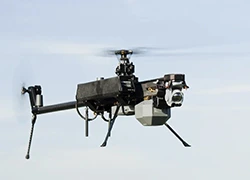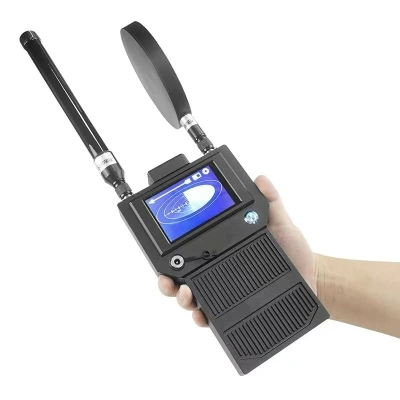On the modern battlefield, electronic warfare (EW) is becoming a key factor in determining victory or defeat. The control and utilization of the electromagnetic spectrum is critical in military operations. With the rapid development of drones, counter-drones and jamming technologies, warfighters must have the ability to quickly identify and respond to threats. Anduril Industries' Pulsar series of signal jammers, with its powerful artificial intelligence support and modular design, are creating new tactical advantages for electronic warfare.
Pulsar Jammer Definition and Form Factor
Pulsar GPS device jammer is a software-defined electronic warfare system that uses artificial intelligence at the edge to quickly identify, adapt and defeat threats in the electromagnetic spectrum. Designed in a modular form factor, the system can adapt to multiple platforms such as ground vehicles (Pulsar-V) and aircraft (Pulsar-A) to support a range of electronic warfare missions. This flexible form factor enables Pulsar to be rapidly deployed in different combat environments, providing users with versatile electronic warfare capabilities.

Pulsar signal jammer is compact and highly scalable, and can be mounted on a standard NATO bracket to adapt to the needs of a variety of vehicles. This allows it to be easily integrated into modern military equipment and has cross-platform compatibility. This modular design not only enables Pulsar jammer equipment to respond to diverse threats on the battlefield, but also enables faster deployment capabilities, adapting to emerging threats in hours to days, rather than months or even years.
Pulsar's role in electronic warfare
- The core function of the Pulsar jammer is to combine software-defined radio (SDR) and artificial intelligence (AI) to enable it to detect and respond to threats in the electromagnetic spectrum in real time. In electronic warfare, the types of threats and spectrum interference are constantly changing, and traditional response systems are often unable to respond quickly. However, Pulsar can autonomously query the electromagnetic spectrum through radio frequency machine learning (RFML) technology to quickly identify known threats and detect abnormal behavior.
- The Pulsar jammer blocker series of electronic warfare systems not only provide electronic countermeasures (EC) and electronic support (ES) capabilities, but also have advanced functions such as direction finding (DF) and geolocation. Especially in combating drones and counter-drone operations, the Pulsar signal system can quickly detect targets and carry out electronic attacks, effectively suppressing and destroying enemy communications and control systems. In addition, Pulsar blocker can also integrate electronic support measures to provide key information about the electromagnetic environment to assist combat decision-making.
- The Pulsar jammer device series has two main variants: Pulsar-V (ground vehicle version) and Pulsar-A (airborne version), and their modular design enables it to be integrated into different tactical platforms. With an open source architecture, the Pulsar jammer system can be integrated with other electronic warfare and command and control systems to create a distributed electronic warfare network, further improving coverage and combat coordination.
- Pulsar anti-drone blocker jammer is unique in its agile adaptability, which can not only respond quickly to known threats, but also detect anomalies in the electromagnetic spectrum. With radio frequency machine learning (RFML), the system can autonomously search and analyze a wider range of electromagnetic activities, significantly reducing the response time to new threats. The rapid update capability of the Pulsar system enables it to cope with the current complex electromagnetic environment and provide strong support for future electronic warfare missions.


Features and advantages of Pulsar signal jammers
- The biggest feature of the Pulsar jammer series of signal jammers is its high flexibility and rapid adaptability. It can use artificial intelligence to analyze and process electromagnetic threats in real time at the tactical edge and provide effective countermeasures in a very short time. Compared with traditional electronic warfare systems, Pulsar has a faster response speed and a shorter deployment cycle, providing significant strategic advantages for military operations.
- The modular design of the Pulsar jammer system enables it to be adjusted according to combat needs and adapt to a variety of platforms. Whether it is a ground vehicle or a drone, Pulsar can be quickly deployed in different variants. For example, Pulsar-V jammer is a variant designed specifically for ground combat vehicles, while Pulsar-A is an airborne payload suitable for various manned or unmanned aircraft. Such a design greatly enhances the combat adaptability of the system.
- The open architecture of the Pulsar system also brings it great advantages. Through the open architecture, Pulsar jammer device can be seamlessly integrated with existing electronic warfare and command and control systems to form a unified electronic warfare capability network. This distributed mode of operation not only improves the coverage of electronic warfare, but also strengthens the synergy between different systems and improves overall combat efficiency.
- Pulsar's AI-driven features give it a high degree of autonomy. It can autonomously query and learn the electromagnetic spectrum, quickly identify and adapt to emerging threats, and even identify abnormal activities that have not been recorded. This adaptability is particularly important in complex and rapidly changing battlefield environments, especially when dealing with threats from non-state actors. Pulsar's rapid response and flexibility make it an irreplaceable tactical tool.
Pulsar anti-jammer's future potential
The Pulsar jammer series of jammer equipments represents the future development direction of electronic warfare systems. As threats on the modern battlefield continue to evolve, traditional electronic warfare systems face increasing challenges. The launch of Pulsar shows how a highly agile electronic warfare system can use artificial intelligence technology to quickly adapt and respond to the changing electromagnetic environment.

Sam El-Akkad, General Manager of Anduril RF/EW Systems, noted: "Pulsar is designed to survive and win in highly congested and contested electromagnetic environments, enabling warfighters to leverage electronic warfare capabilities in conjunction with other advanced technology systems operating in the electromagnetic spectrum and cyberspace domains to counter state and non-state actors." This forward-looking design not only effectively responds to current tactical needs, but also lays the foundation for future military technology development.
The innovation of the Pulsar jammer system is also reflected in its continuous development capabilities. Through an open software development kit (SDK), Pulsar can continuously update its capabilities and integrate with systems from third-party suppliers to ensure that it is always at the forefront of technology. This continuous development feature allows Pulsar to keep pace with new threats and always maintain control of the electromagnetic spectrum.





